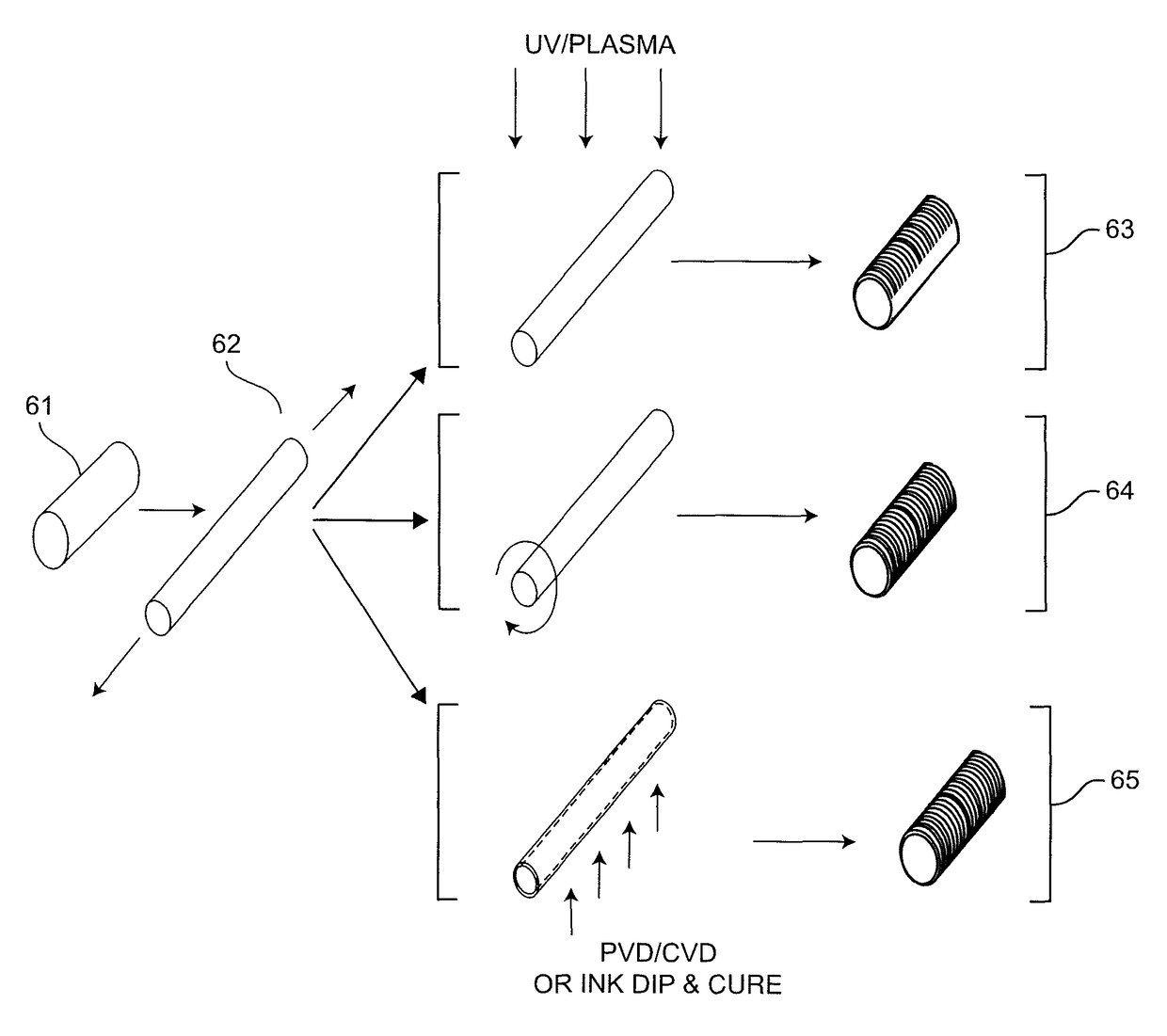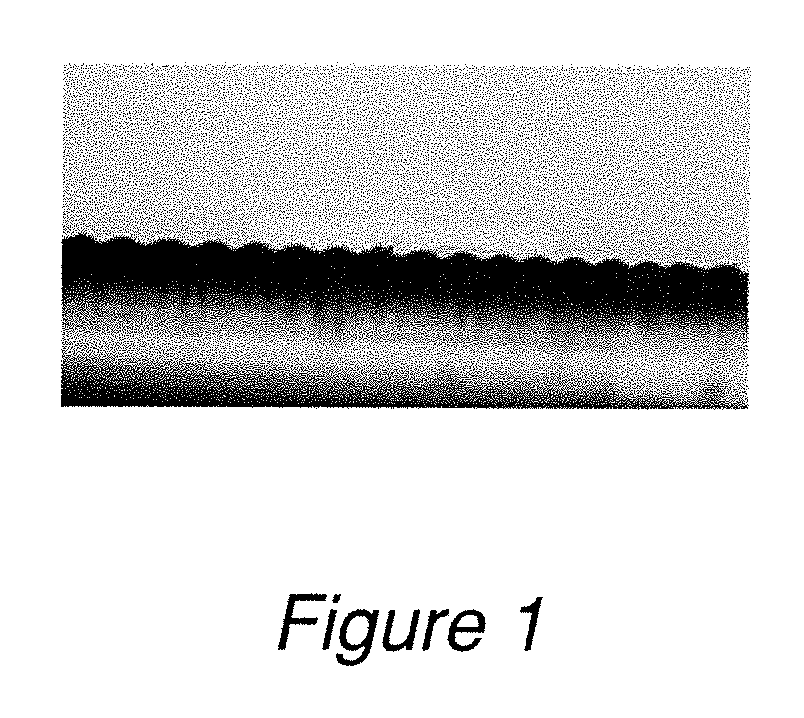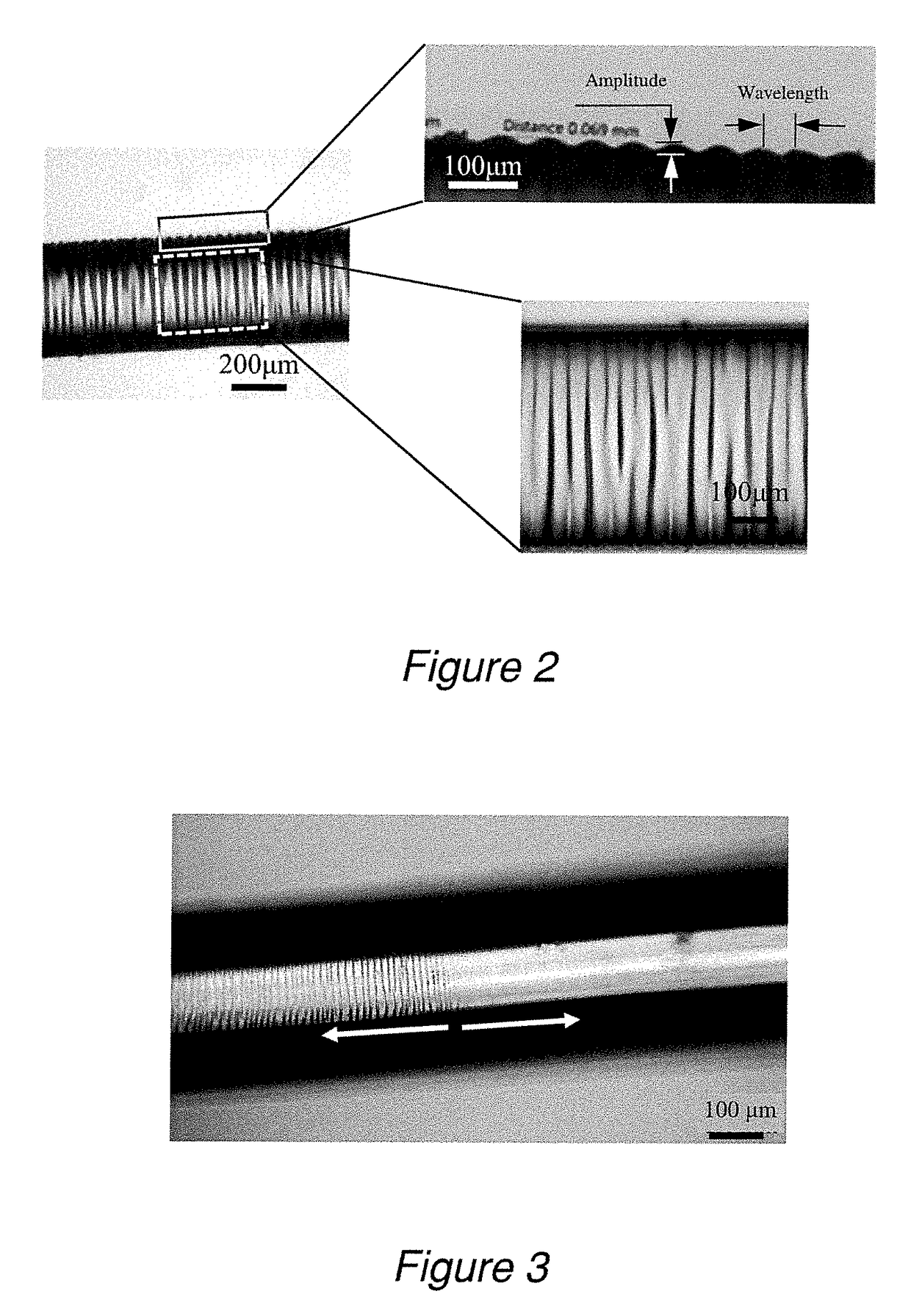Low-cost fiber optic sensor for large strains
a fiber optic sensor, low-cost technology, applied in the direction of instruments, force measurement by measuring optical property variation, glass optical fibre, etc., can solve the problems of large strain magnitude, complicated and expensive, limited amount of strain that can be used for making measurements, etc., to achieve high elastic and extensible
- Summary
- Abstract
- Description
- Claims
- Application Information
AI Technical Summary
Benefits of technology
Problems solved by technology
Method used
Image
Examples
Embodiment Construction
[0025]Referring now to the drawings, and more particularly to FIG. 1, there is shown a portion of a lateral cross-section of a representative length of fiber optic sensor in accordance with the invention. In the portion of the lateral cross-section shown, a portion of a fiber optic core, preferably of polydimethylsiloxane (PDMS), is encased in a hard shell or overlayer (e.g., referred to as a skin or cladding; skin tending to infer a small thickness and cladding inferring a greater thickness approaching one half the unstressed diameter of the core which is considered at the present time to be a practical limit on cladding thickness but is not critical to the useful practice of the invention) that may comprise any of a plurality of materials as will be described below with an undulating surface at the interface of the two materials with the undulations being substantially uniform in both height and period along the fiber length. Since a small amount of manufacturing variability inevi...
PUM
| Property | Measurement | Unit |
|---|---|---|
| strain elongation | aaaaa | aaaaa |
| elongation | aaaaa | aaaaa |
| diameter | aaaaa | aaaaa |
Abstract
Description
Claims
Application Information
 Login to View More
Login to View More - R&D
- Intellectual Property
- Life Sciences
- Materials
- Tech Scout
- Unparalleled Data Quality
- Higher Quality Content
- 60% Fewer Hallucinations
Browse by: Latest US Patents, China's latest patents, Technical Efficacy Thesaurus, Application Domain, Technology Topic, Popular Technical Reports.
© 2025 PatSnap. All rights reserved.Legal|Privacy policy|Modern Slavery Act Transparency Statement|Sitemap|About US| Contact US: help@patsnap.com



